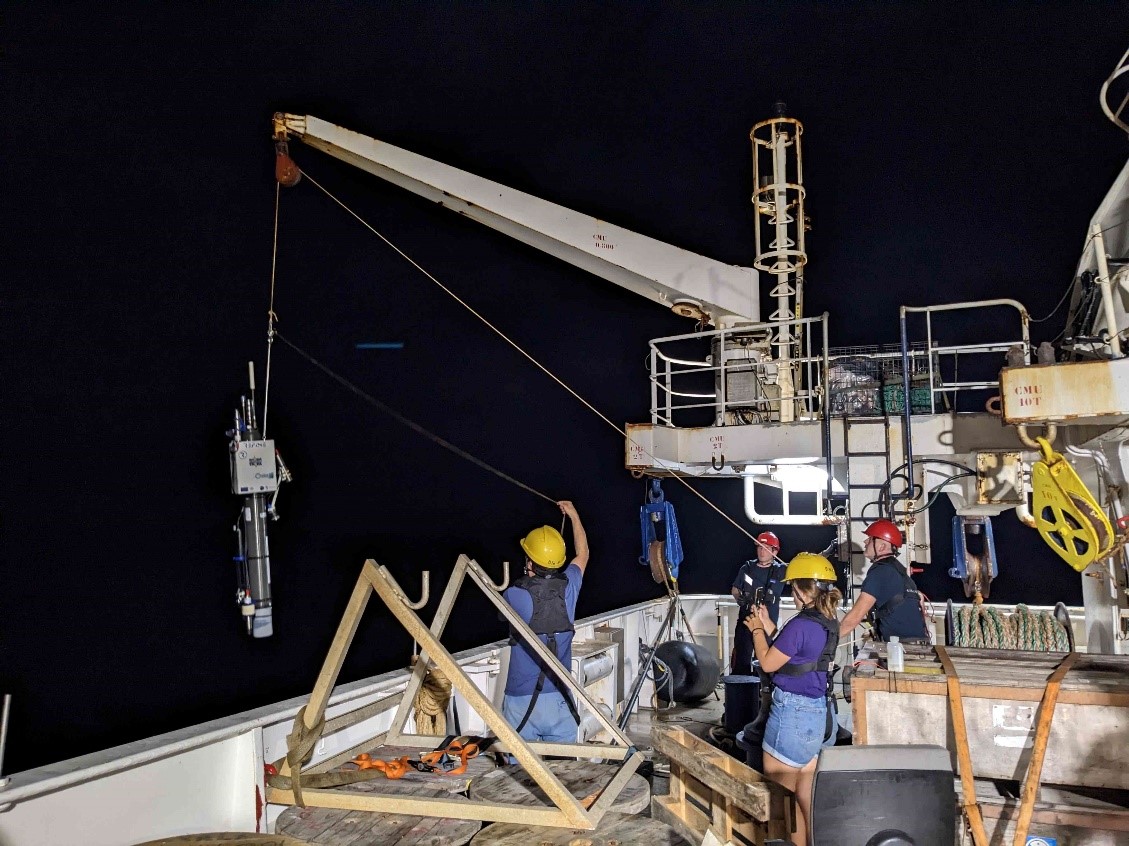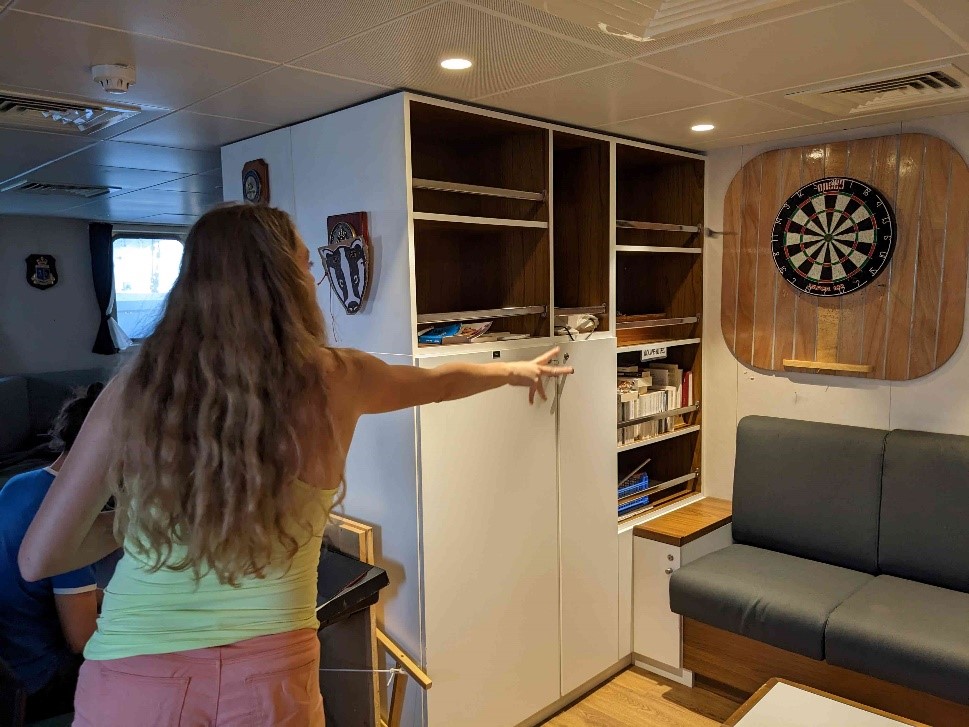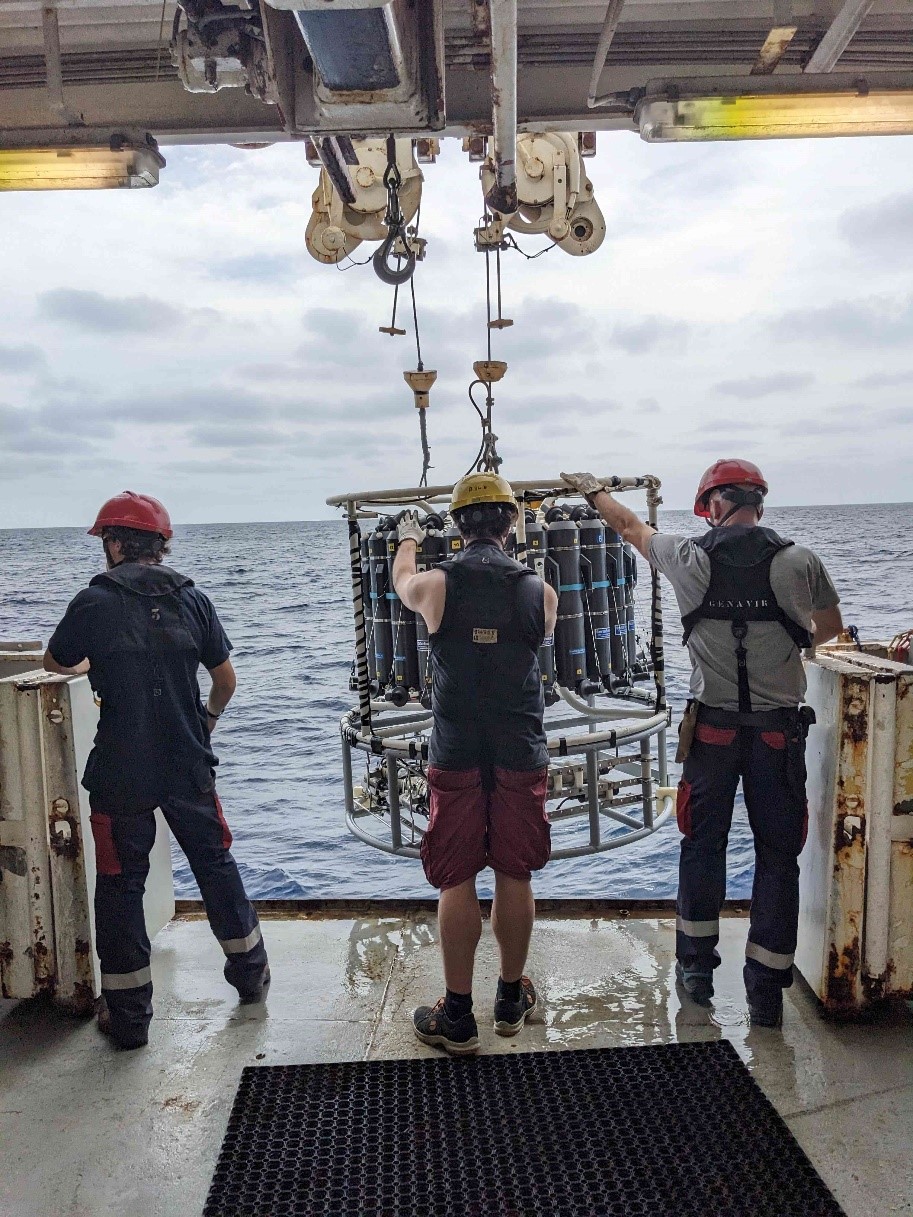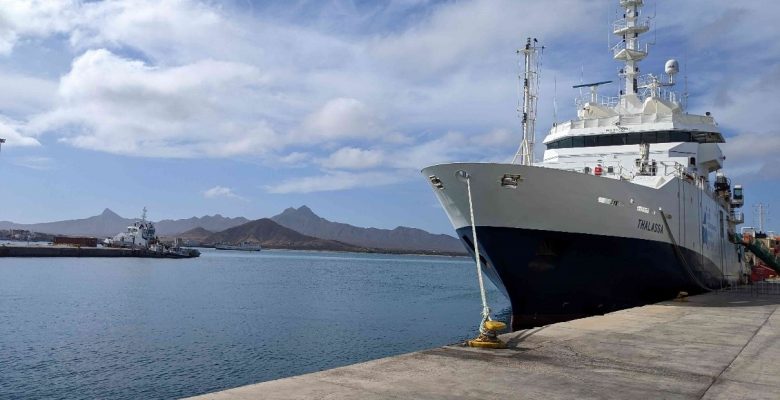For more than 25 years, the international PIRATA network has been operationally monitoring the tropical ocean, continuously collecting quality atmospheric and oceanic data. To ensure the maintenance of this network and keep it functional, the 33rd PIRATA campaign set off on March 5, 2023 from Mindelo in Cape Verde for a 38-day journey aboard the oceanographic vessel THALASSA of the French Oceanographic Fleet. Here is some news from the shore, after 15 days at sea.
For this 33rd PIRATA campaign as for the previous ones, it is the engineers from the Brest laboratories of the UAR IMAGO who are responsible for most of the implementation of these annual French campaigns: preparation, logistics, and carrying out the operations.
Maintenance of buoys and moorings, hydrological measurements, current or chemical measurements, analysis, processing and validation of data… keeping an operational monitoring network at sea requires equipment in perfect working order and compliance with well-defined procedures to obtain data qualified and scientifically exploitable.
The scientists on board work as a team, and some (6 permanently) take turns per shift (2 per shift). They pool their skills to allow the collection of a wide variety of data and ensure the smooth running of an oceanographic campaign in the middle of the tropical Atlantic Ocean, sometimes outside certain areas of the Gulf of Guinea where piracy has been rampant for a few years.
The first moments on board crucial to unite the team
The start of a mission is always a friendly moment. Each member of the crew, whether scientific, technical or logistics, gets to know the equipment and their colleagues. A very tight schedule is presented to everyone, with the details of the objectives to be achieved during the expedition. The slower pace of the first days of the campaign also makes it possible to brief and train newcomers on watchkeeping and the techniques used for buoy maintenance and data collection in particular.
After these few days of installation, some instruments are deployed well before arriving at the first buoy site. Two biogeochemists from the Villefranche-sur-mer LOV, for example, succeeded in deploying two BGC-ARGOs and visualizing the first profiles produced by these autonomous floats. The parameters measured by these floats make it possible to deduce the concentrations of the main groups of phytoplankton.

Launching of a BGC-ARGO profiler. © Margaux Brandon
Very intense scientific activities nevertheless leave room for moments of sharing and relaxation, such as video game evenings for example. Being united and united during an expedition at sea makes a real difference for each member of the crew, as much as for the success of the objectives of the mission.
Before actually arriving at the site of a buoy to replace it, certain moments are dedicated to fishing for entertainment and to feed the crew, because the buoys act as fish concentrators!
In a few days, the mechanics are well established. Watch, leisure, rest… everyone quickly knows their role on board, and mutual assistance between members is essential at all times. It is for all a feeling of shared trust that dominates each campaign.

Moment of relaxation on board. © Margaux Brandon
Start of maintenance and data collection activities
The pace of the first week is sustained in order to be able to take care of the four buoys located at 10°W longitude and carry out all the readings. Replacing a buoy takes about a day. She can’t just be brought back on the boat and then cleaned and finally refloated. It is first necessary to remove the atmospheric sensors, before considering towing it on the boat.
While the old buoy is being cleaned, a CTD is carried out down to 2000m depth to profile the site. A CTD profile allows the collection of a profile of conductivity (capacity of water to allow the passage of electricity between two electrodes, making it possible to deduce the salinity), temperature and depth (Conductivity Temperature Depth) of water between the surface and the bottom. Such a profile, up to 200m deep, will be repeated every 3 hours for 48 hours near the first buoy (10°W-0°N) as part of a study on the evolution of the composition of the waters conducted by LEGOS scientists.
At the end of the evening, the deployment of the new buoy and some 5,000 meters of cables begins. This maneuver can also be an opportunity for the crew to cross paths with a group of pilot whales, a hammerhead shark or curious dolphinfish.
Data collections for other missions and estimating the state of health of the oceans
PIRATA campaigns also contribute to the global ocean observation system and allow research units to have access to a certain amount of in situ data. The crew therefore makes itself available to the objectives of three other major programs:
- For the LEGOS, in addition to CTD profiles, sensors are installed in the first 50 meters on 2 equatorial buoys;
- For the LOV, 10 specific CTD hydrological profiles with samples for biogeochemical analyzes are carried out, in addition to the deployment of the two BGC-ARGO profilers at the start of the mission;
- Finally for the LOCEAN, continuous measurements of pCO2 parameters (partial pressure of CO2) and pH are carried out, as well as the replacement of 2 surface CO2 sensors on the buoys located at 10°W-0°N and 10° W-6°S.
The partial pressure of CO2 is important to know to estimate the capacity of the ocean to store carbon. In a simple way, the atmosphere exchanges CO2 with the surface of the oceans, in order to balance their partial pressure. The greater this pressure, the greater the quantity of CO2 in the atmosphere, and the greater the absorption of this gas will be in the surface water, impacting underwater life.

Launching operation of the rosette bathysonde during the PIRATA-FR33 campaign, to sample water at different depth levels. © Margaux Brandon
Finally, samples of Sargassum*, crustaceans present on the buoys will be taken as well as pieces of tuna (if caught) to analyze their mercury content and monitor the evolution of pollution in our oceans.
* Sargassum: brown algae that have been proliferating in the tropical Atlantic for more than 10 years, risking decomposition on our coasts, producing hydrogen sulfide harmful to health, as observed in the West Indies with strong economic and social impacts.
